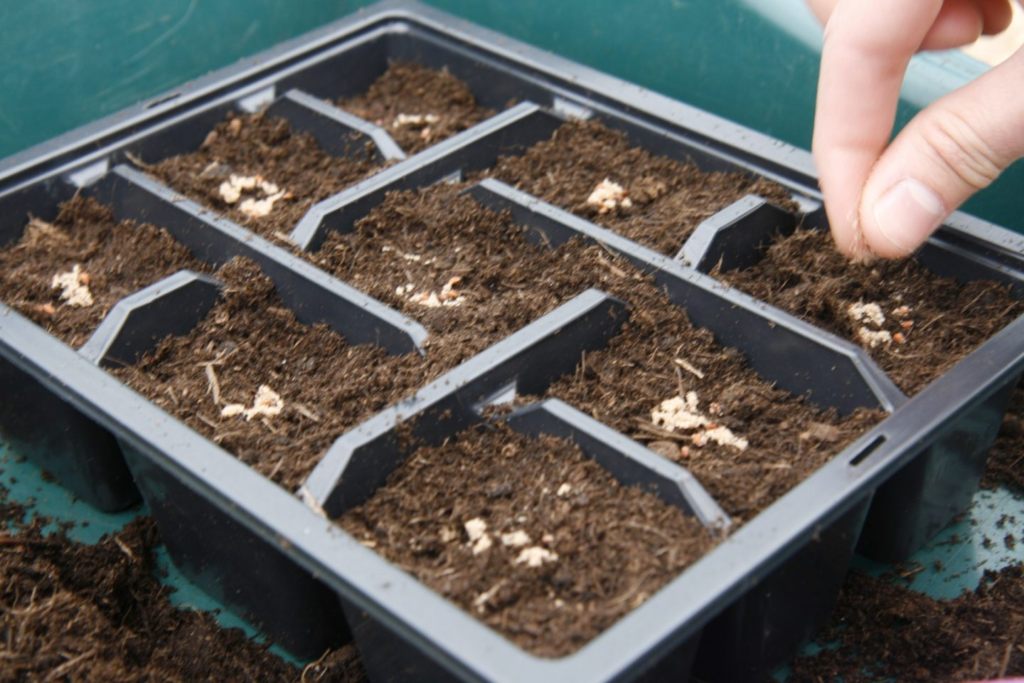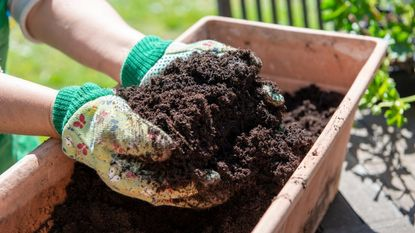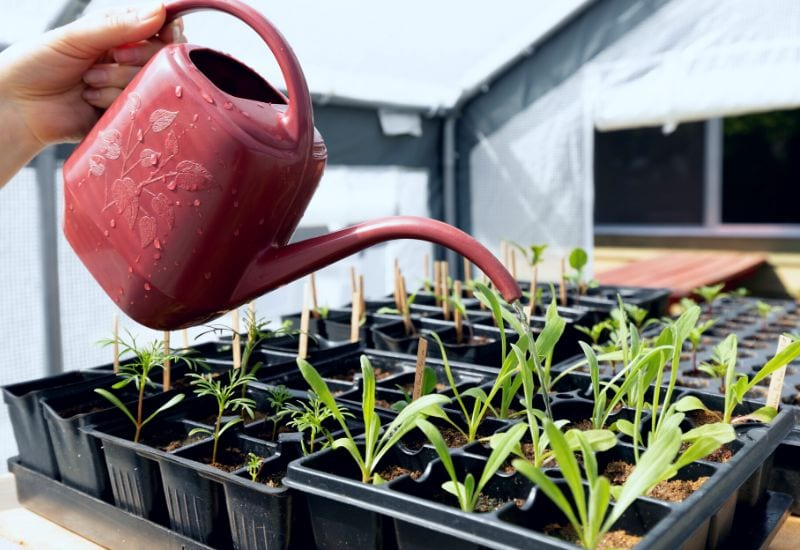25 February 2023, by Benedict Vanheems
As spring approaches, it’s the perfect time to start sowing seeds. If you’re new to seed starting, or want to improve your technique, this guide will provide you with practical tips to ensure successful seedlings and a thriving garden.
Timing is Crucial
The first step in successful seed sowing is timing. If you sow too early, your seedlings may be ready for planting before the outdoor conditions are suitable, which can stunt their growth. On the other hand, sowing too late may not give your plants enough time to mature before the season ends. The ideal sowing time varies by plant type, but most cool-season crops, like lettuce, peas, and onions, can be sown in early spring. Warm-season crops such as tomatoes should be started indoors to protect them from cold temperatures. For personalized sowing dates, consider using a Garden Planner based on your location and local weather conditions.
Essential Seed-Sowing Equipment
You have several options for sowing seeds: pots, plug trays, or individual pots for larger seeds. Starting with small pots is a great way to conserve space, especially indoors. By sowing seeds into smaller pots, you can germinate many seedlings in a confined area and later transplant them into plug trays. This technique works well for crops like tomatoes, cabbage, and salad greens.
Plug trays are ideal for plants that will be multisown, like beets and onions, where multiple seeds are planted in one plug to grow together as a cluster. For these crops, sowing multiple seeds per plug maximizes space and increases efficiency.

For larger seeds like beans or squash, individual pots are necessary to accommodate their bigger roots. Invest in durable, high-quality plug trays to ensure they last season after season.
Choosing the Right Potting Mix
Selecting the right potting mix is key to successful seed starting. While an all-purpose, peat-free mix works for most seeds, it may need some refinement. To ensure your seedlings have enough room to grow, consider sifting the mix to remove large chunks and improve texture. Adding vermiculite can enhance aeration and water retention, especially for seeds that need extra moisture.
For seeds that require superior drainage, such as peppers, mix your standard potting soil with coir, a light, fluffy material that improves drainage and prevents waterlogging.

Sowing Seeds: Step-by-Step
Start by filling your pots or plug trays with your chosen potting mix, making sure to firm it down lightly. For smaller seeds, scatter a pinch evenly across the surface, then cover lightly with more mix. For plug trays, push the mix into the individual plugs, level it off, and make small depressions in each plug to hold the seeds.
Be sure to label your containers with the type of seed and sowing date, so you can track progress and timing.
Watering and Germination
Water the seeds gently using a watering can with a rose attachment, ensuring the mix is evenly moist but not soaked. Cover your pots or trays with a clear plastic cover or glass to maintain moisture and warmth, which will encourage faster germination. Keep your seeds in a warm, well-lit spot. If your indoor space lacks natural light, consider using grow lights to prevent seedlings from becoming leggy.

Pricking Out and Transplanting Seedlings
When your seedlings have developed a few leaves and are ready to move into individual pots, it’s time for “pricking out”—carefully transferring each seedling to a larger pot. To do this, gently lift the seedlings using a stick or pencil, and place them in the new pot. Always handle seedlings by their leaves, never the stems, to avoid damage.
After transplanting, water the seedlings thoroughly and allow them to settle. Though they might look a bit droopy initially, they’ll recover quickly and continue to grow strong.
Conclusion
Starting seeds is a rewarding and cost-effective way to grow your own plants. By understanding the basics of timing, equipment, potting mix, and transplanting, you can enjoy healthy, vibrant seedlings that will thrive in your garden. Follow these simple steps, and you’ll soon have a bountiful harvest to enjoy!
